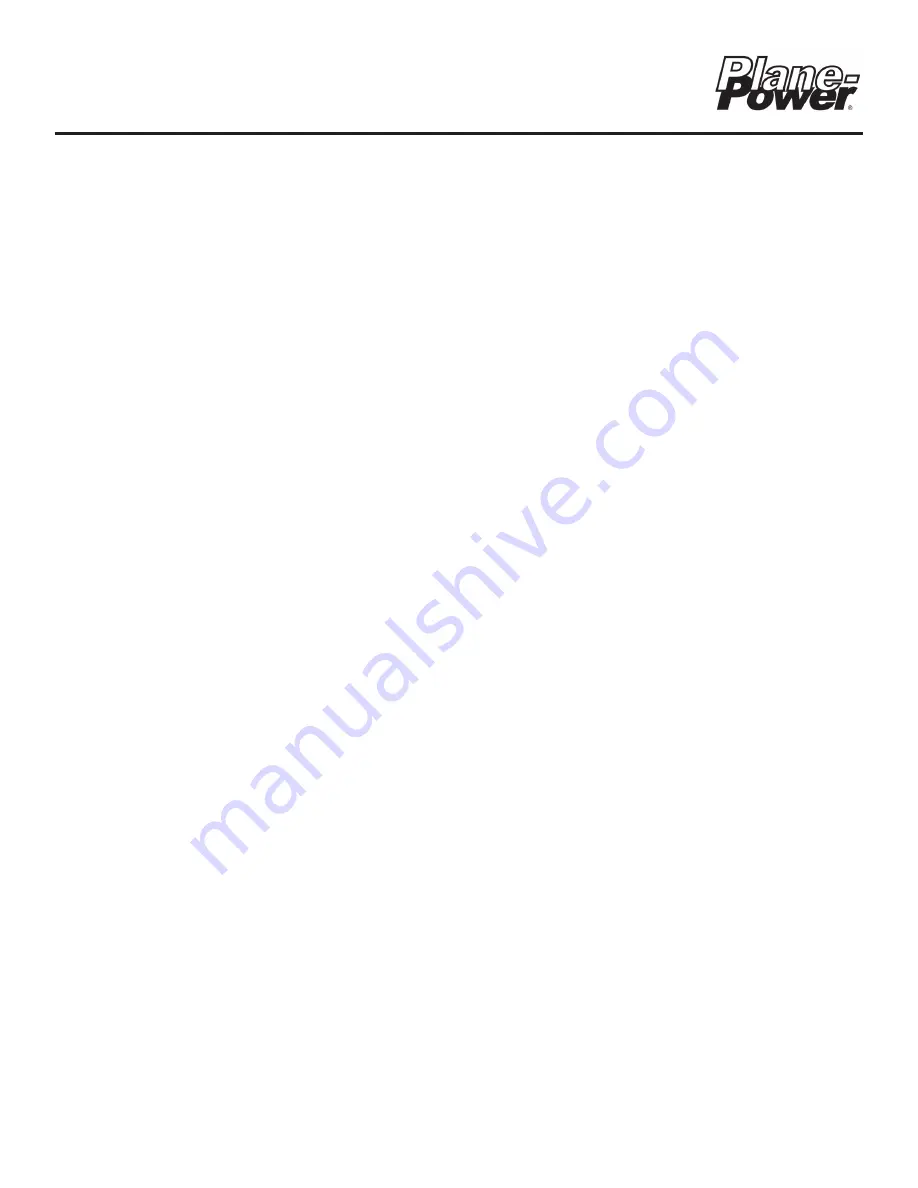
(3) Grasp the drive component (pulley or coupling) and push-pull the shaft in a direction parallel to the axis.
Movement should be small, less than .0062 inch (.1575 mm).
(4) Grasp the drive component (pulley or coupling) and push-pull the shaft in a direction perpendicular to the
axis. Movement should be small, less than .001 inch (.025 mm).
(5) If either bearing sounds noisy, movement is not smooth, or excessive movement (axial or radial) is
observed, the alternator should be sent for repair, overhaul, or replacement.
C. Field Circuit Open or Ground Test Procedure:
(1) Using a multimeter on low range scale (0 to 25 ohm), connect one lead of ohmmeter to the “F1” terminal
and the other lead to “F2” terminal or ground depending on the model being tested.
(2) Spin the output shaft and note ohmmeter reading. Meter should read between 7 and 20 ohms while rotor
is turning.
(3) A reading lower than 3.5 ohms indicates either a grounded field terminal or a failed rotor. Repair field or
send alternator for repair, overhaul, or replacement.
(4) A reading higher than 20 ohms indicates: either worn out or hung brushes, an open brush lead or a failed
rotor.
(5) Items (2) and (3) reading may be addressed by replacement of the brushes or the brush holder
assembly. Refer to section 6.7 (Maintenance) for brushes.
(6) Item (3 & 4) failed rotor requires overhaul or replacement of the alternator.
D. Mounting Hardware:
(1) Inspect and replace any removed metallic hardware, i.e., screws, flat washers, nuts, shaft spacer, shaft
woodruff key, etc., exhibiting damage, wear, corrosion, or distortion.
(2) Hardware that will be reused shall be cleaned as required, using a non-corrosive chemical degreaser.
Air-dry parts with filtered dry low pressure compressed air or wipe dry with clean, lint free cloth.
E. Insulators (Washers and Spacers):
(1) Inspect parts for cracks, deformation, and burn marks.
(2) Parts that are suitable for reuse shall be cleaned as required using isopropyl alcohol. Any other cleaner
may damage insulators. Air-dry parts with filtered dry low pressure compressed air or wipe dry with
clean, lint free cloth.
(3) Cracked or faulty insulators require replacement or overhaul of the alternator as it must be disassembled
to replace damaged parts.
F. Brush holder, Brushes and Springs:
(1) Inspect brush holder for cracks or breaks and brushes for condition.
(2) If damaged, discard the brush holder assembly and replace with new.
(3) If brushes are worn or damaged in any way, replace brushes in pairs with new. Never attempt to replace
a single brush.
(4) New brushes are 0.50 inch (12.7 mm) long and must be replaced at 50% wear.
Aircraft Alternator
Maintenance Manual
ES1031
24-30-01
Rev. B: 20 Apr. 2022
Page: 5-3
© 2022 - Hartzell Engine Technologies - All rights reserved












































